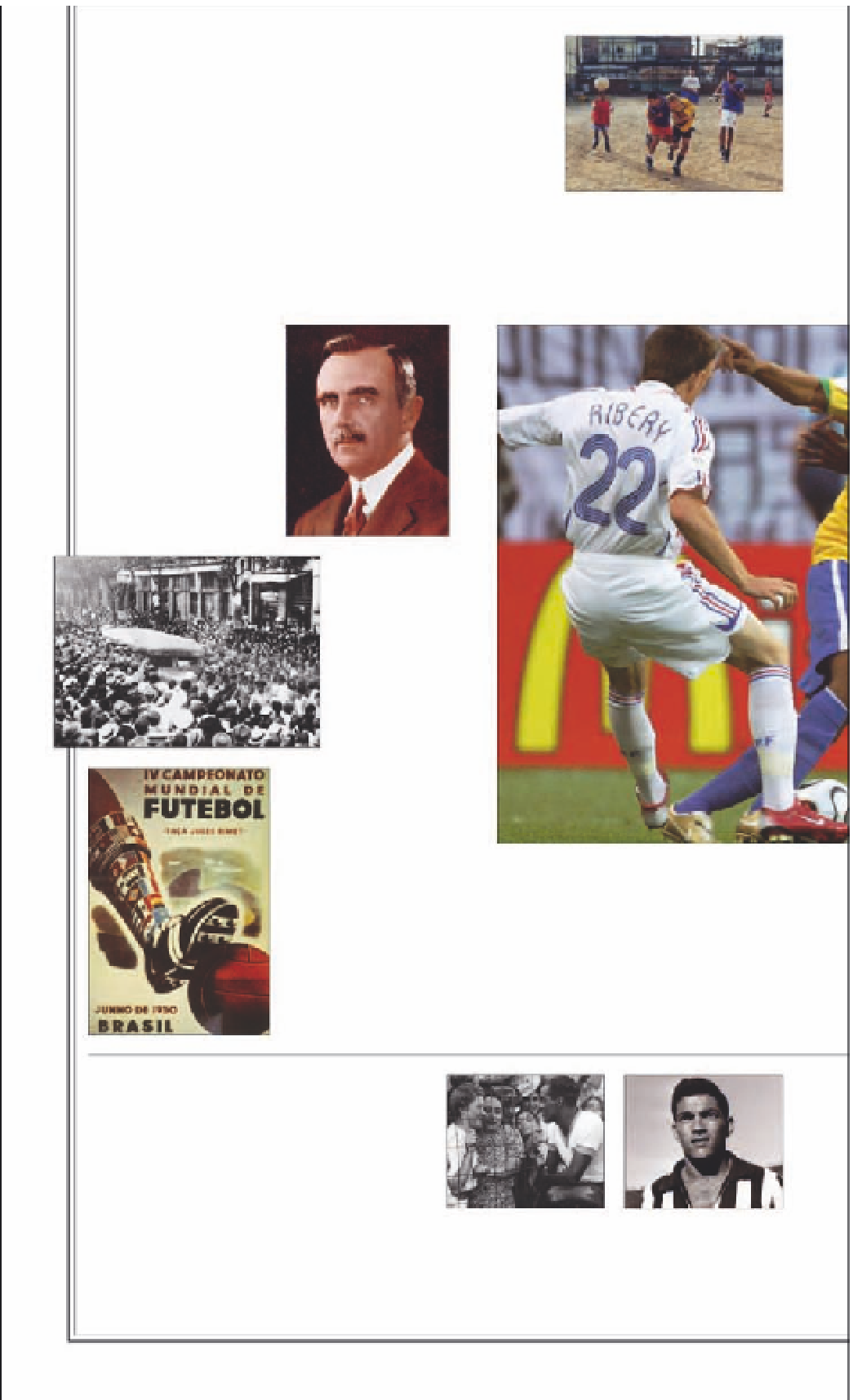Travel Reference
In-Depth Information
Soccer in Brazil
In the first half of the 20th century, soccer went from
being the private sport of Brazil's white European
elite to becoming the greatest symbol of nationhood.
The game united all sections of the population and,
after the national team's first World Cup victory in
1958, brought about unprecedented national pride.
The Brazilian way of playing
futebol
- with more
emphasis on attacking, dribbling, and acrobatic ball
skills - has become a benchmark for excellence, and
is also known as
jogo bonito
, or “the beautiful game.”
In a favela
, the main leisure
activity for children is always
soccer. Rough terrain helps
them develop trademark ball
skills such as the dribble.
Charles Miller
is the father
of Brazilian soccer. In
1894, returning to the
country after attending
boarding school in
Southampton, UK, he
brought two footballs, a
pump, and a rule book.
The first reported game took
place a few months later.
The 1938 national
soccer team
received
a joyous welcome on
their return home
from France. Brazil,
which came third
after defeating
Czechoslovakia, had
also won the hearts
of the Europeans.
The 1950 World Cup
was
hosted in Brazil. In the
fateful final game, Brazil
only needed a draw against
Uruguay to win the tourna-
ment. Overwhelming
favorites, Brazil lost 2-1 in
front of a record 200,000
crowd, which caused the
greatest moment of collec-
tive sporting tragedy in the
country's history.
THE NATIONAL SIDE
With their iconic yellow shirts, the
Brazilian national team, known as
the Seleção, or Selection, is the most
glamorous football team in the world.
It is the only team to have taken part
in every World Cup and have won
it more times than anyone - in 1958,
1962, 1970, 1994, and 2002.
BRAZILIAN GREATS
Brazil has produced more soccer legends than
any other country and also the greatest player of
all time: Pelé
(see p168)
. The first great player was
Artur Friedenreich in the 1910s. Each generation
reveals new stars and the soccer factory shows no
signs of stopping. Since the inauguration of FIFA's
(Fédération Internationale de Football Association)
World Player of the Year award in 1991, only
Brazil has won it with more than one player:
Romário (1994), Ronaldo (1996, 1997, 2002),
Rivaldo (1999), and Ronaldinho (2004, 2005).
Leônidas da Silva
, also
called “Rubber Man”
for his elasticity, was
the highest scorer in
the 1938 World Cup.
Garrincha
, the “Little
Bird,” was born with
bent legs and is consi-
dered to be the finest
dribbler of all time.

































